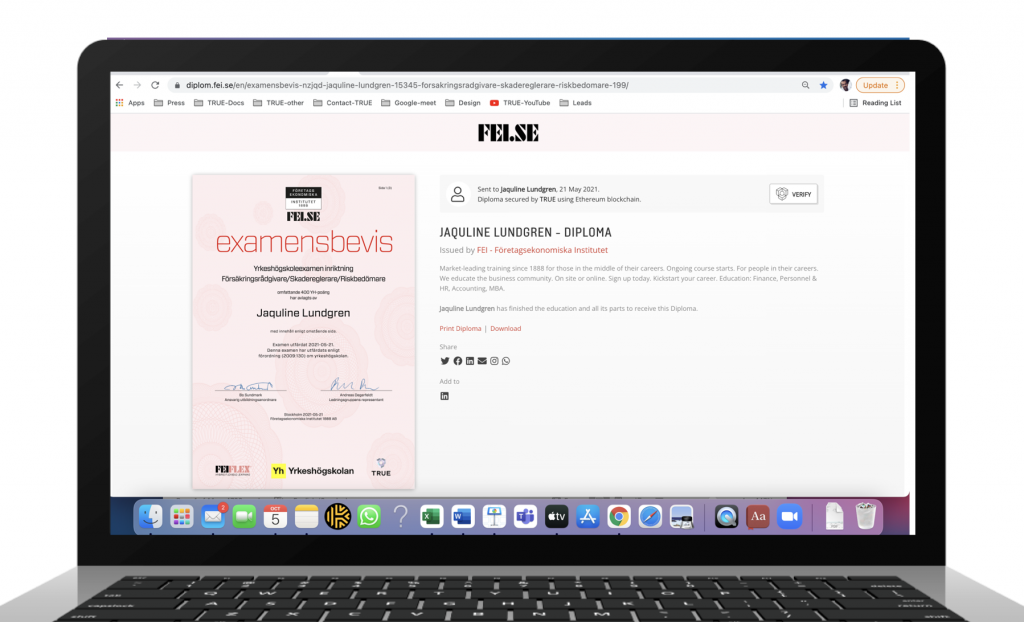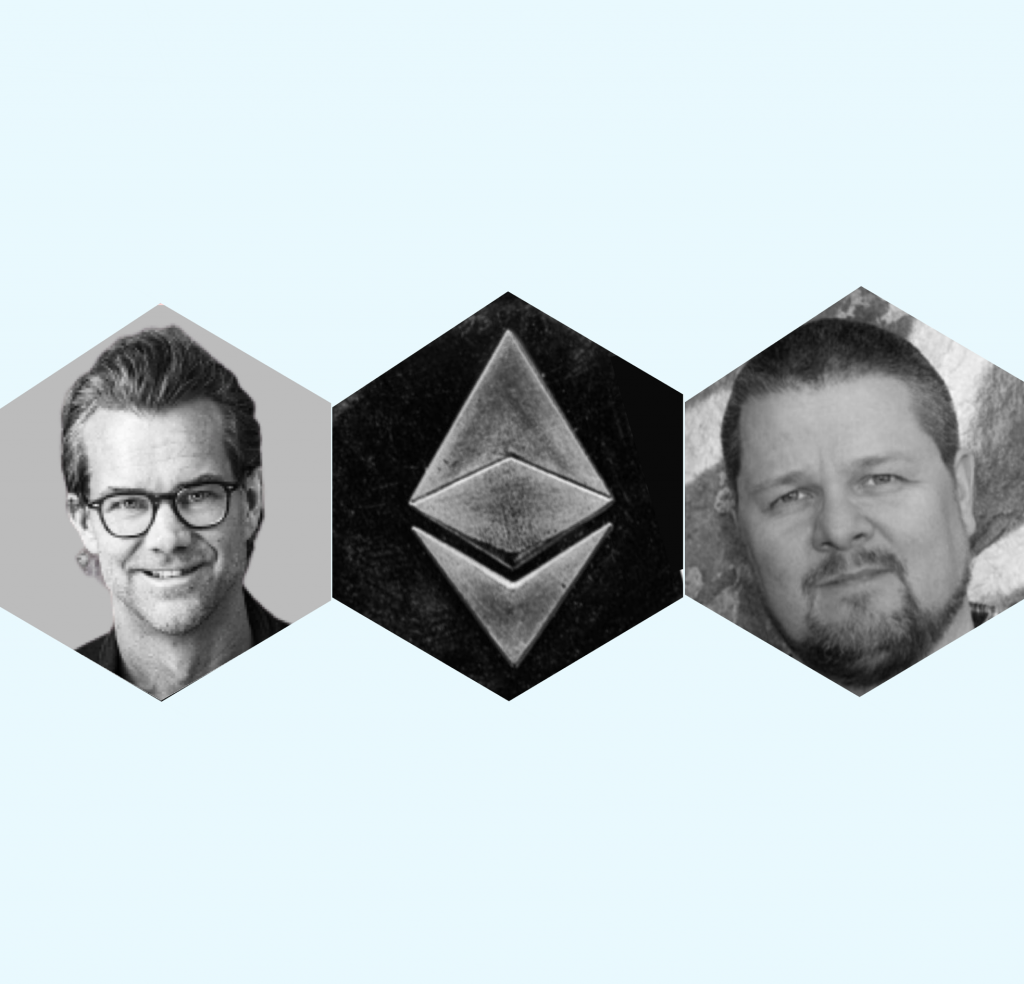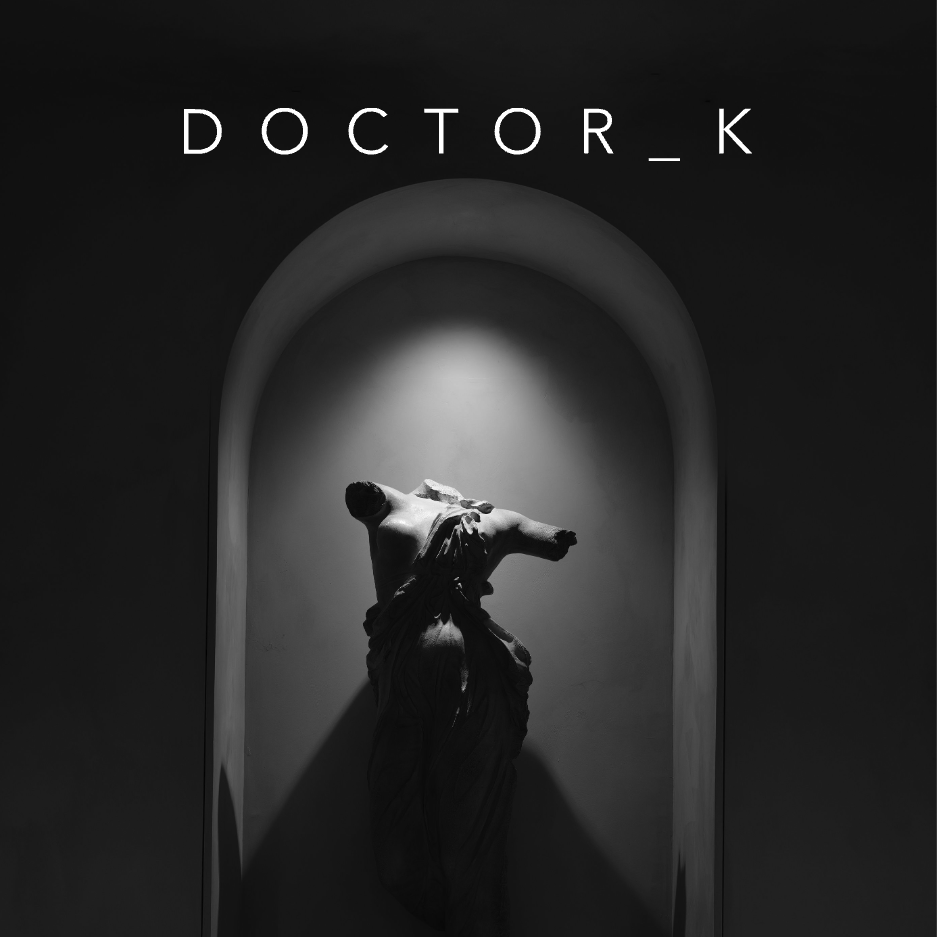(Originally posted in Dagens Industri – Swedish text)
Lifelong Learning Project
“The lifelong learning project” has an explicit focus on the development of new skills in Sweden, to manage “a changing society”. The statements are from the Ministries of Education and Labor of Sweden. But how these new skills could be proven, and in the long run provide practical benefits for the individual is a bit unclear.
“If ‘you’ take a course at Berghs (private Education in Communication, DI’s note), only ‘you’ and Berghs know that ‘you’ have actually taken it”, says Björn Flintberg, digital strategist at RISE (Research institute of Sweden), “and anyone who wants to verify that you have actually passed that course needs to do further research.”
A new Innovation Project headed by RISE
RISE has, together with the Swedish Public Employment Office and the Swedish Agency for Vocational Colleges (MYH), just started an innovation project pertaining to how “micro credentials” can become more valuable. Or, how they can become worth the 100 millions invested into them.
Swedish company TRUE is another entity that RISE has turned to, to help focus on the issue. Through their own so-called ‘smart contract’, TRUE already have a business using Blockchain to save and secure data from diplomas and other forms of certificates, as well as other official documents in general.
Current customers of TRUE include colleges such as Nackademin, Företagsekonomiska Institutet (FEI), Universum (Employer Branding) as well as the Swedish Security & Safety Association (SSF), who educate and certify Security Managers among others.

Generated, issued and secured using TRUE software for original documents.
“At Nackademin, two people used to work full-time for several weeks just to issue diplomas. Now it takes a few hours”, says Patrik Slettman, CEO of TRUE. The reason is that the diplomas are generated, secured and then distributed automatically to those who have graduated, by TRUE’s software.
Technically, all that is stored in blockchain is a code, a so-called hash-string, which is then linked to a specific document. The digital document can be verified with the click of a button, after which the authenticity is controlled. A person who wish to share a document digitally simply sends the URL-link of the specific diploma/certificate/etc.
“If you want to print a document or share a pdf-version of it, a QR code is generated on it which can be scanned to open the True original document online, which is connected to blockchain”, says Patrik Slettman. “Looking at it simplistically it could be overlooked as a gimmick, but there are many real practical values, as we have never before had a simple way to check the validity of a document, he says.”
Increases traffic and attention
Patrik continues; the digital certificates are displayed on the issuers own website, which in the case of Universum – who are on track to send 18,000 certificates in 2021 – generates a considerable amount of traffic that they can be used to market their services.
“We don’t have a single client who has yet recoup the cost associated with TRUE by the traffic generated alone, from people opening and looking at the document pages,” he says.
Saves time and resources
In addition, companies save time and resources by creating and distributing documents automatically.
“This is a fully integrated solution. It is our clients that are the senders/issuers of documents, we help them with design to showcase their brand. We are a tech-partner, and our logo is seen as a stamp to prove authenticity when someone wants to verify a document, it is also what is exchanged for the qr-code when printed”, says Patrik Slettman.
Blockchain is forever
Q -The blockchain is, of course, forever – that’s the point. What happens if something goes wrong with a transaction or a saved document?
“The documents are co-owned by the publishers and the recipients. So, if a recipient tells a publisher that ‘my name is misspelled’, they can then break the link between the document and the blockchain, and upload a new version. The old hash always remains, but without a connection to the incorrect document.”
NFT’s vs TRUE documents?
Q -How is a certificate/diplomas different from an NFT (non-fungible token) which is owned by the person who buys it?
“An NFT is often linked to a wallet (blockchain-based wallet, Di’s note). There, it is the wallet that actually ‘owns’ the NFT. Therefore, it can change owners in the same way as cryptocurrencies. Our document-solution is built on our own developed smart contract.”
TRUE has to date only taken in a “friends-and-family round” of 3 million (SEK) from, among others, Framtidsmedia to a valuation of just under 30M SEK. Patrik Slettman describe it as a strategic collaboration where a partner helps to sell the service. Right now he has no plans to raise capital as the business is growing at a steady pace.
In the long run, he sees that TRUE can develop and work with several different blockchains as well as secure other types of important digital files and evidences. From RISE’s perspective, in the very project where TRUE is a partner, the goal is to develop a model for how a person can save and share their entire careers education in a safe and validated way.
Real and traceable knowledge
“We want to be able to validate knowledge easily by giving you a ‘competence profile'”, says Björn Flintberg, but at the same time says that no such product will be the end result of the research project.
“What we want to develop is a model for how to do this. A model that is accepted at such a high level that it is worth making a larger investment to make it a reality. It should be interesting enough for companies and training providers and fit with the EU’s joint investment in blockchains.”
Footnote: As of this year, Dagens Industri will also use TRUE to issue diplomas to the winners of the Gasell Prize, Swedens largest businesses-award.





